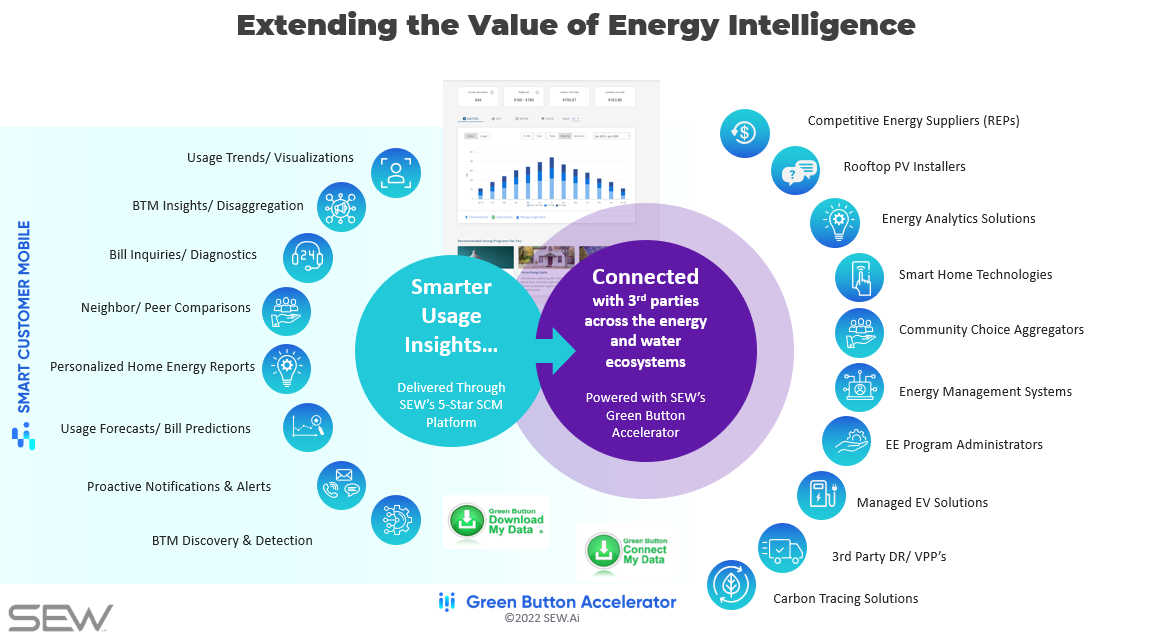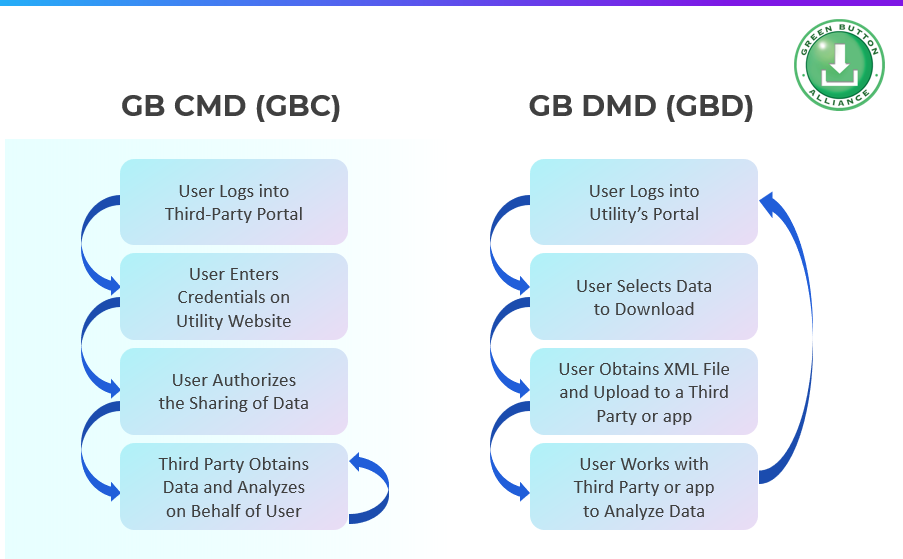
The Big Data Share
How democratization of customer data is reshaping the clean energy landscape…
The impact of data and digital innovation on the energy transition has been undeniable. The volume and velocity of data that utilities have available to them has risen exponentially. We’ve seen dramatic improvements in data access and reporting, speed and quality of insights produced, and real examples of what’s possible when we take that further with more advanced analytics and practical application of deep learning and AI. Utilities have shown their ability to create value from data when the business environment demands it.
Yet one of the most untapped sources of data and insight in the energy and utilities sector is its application of customer usage intelligence - that precious and prolific body of data produced through years of investment in smart metering and related infrastructure investments that our industry still struggles to make fully accessible and usable for ongoing innovation.
The Promise of Smart Meter Intelligence
For years, utilities have argued that the added frequency and granularity of customer usage intelligence made available through advanced metering infrastructure (AMI) would be a game changer for the industry- unlocking insights, driving improvements, and producing a level of ROI that should make these investments a virtual “no brainer”. It was the “soft factor” if you will—the intangible benefit that would tip the scales and set smart metering on its current trajectory.
Yet nearly three decades later, and with well over 1 billion smart meters deployed globally, many regulators and customers would assert the value being extracted from that body of intelligence has fallen well short of what was originally expected. While there are clearly cases where utilities are utilizing usage data and insights to their operational advantage, the degree to which that value has accrued directly (and visibly) to end customers is debatable. That side of the value equation may very well be the most important one to address now -- because in the end, it will be the customers’ perception of value that tips the scale for future tranches of smart grid and AMI investment.
Creating Value within the Utility Operating Model
A few years ago, I penned an article highlighting 7 innovative areas for leveraging smart meter intelligence , pointing to what I saw as the most untapped use cases for smart meter data, and the value that data could be yielding if utilities were to embrace a more holistic approach to levering their AMI data
Today, it’s not hard to find examples of many of these use cases in action. Leading utilities with mature AMI deployments have shown us glimpses of can be achieved when equipped with the right data and analytics-- the ability to see trends, disaggregate load and identify drivers, detect anomalies, and make accurate and useful predictions about customer behaviors. Many inside the utility have begun to lean on that body of intelligence to make meaningful improvements to the areas utilities themselves control and influence- procuring supply, informing rate design, managing grid infrastructure, providing billing insights and promoting its own energy efficiency programs.
Extending Value for Customers
If one thing has become clear in the energy transition, it’s that we are now operating on a different playing field, under a different set of rules. Achieving the bold commitments that most utilities have embraced around energy savings, carbon reduction, and overall resource sustainability will no doubt require accessing and collaborating with today’s broad and increasingly complex ecosystem of new market participants.
This means utilities will need to literally ‘meet customers where they are’- connecting seamlessly with 3rd party solutions that are accounting for an increasingly large and growing share of the customer’s energy experience.

The more orchestrated the dance between utilities and this wider ecosystem of 3rd party solutions and vendors, the more additive the contributions will be to our clean energy and sustainability commitments. And it’s in that context that customer data, shared openly and seamlessly across this ecosystem becomes vital.
Impact of Green Button
That was the promise over a decade ago when Green Button came on the scene. It delivered to the industry exactly what was needed-- a simple, standardized, safe and secure way for customers to access and share THEIR usage data and share it openly with third parties working on their behalf.
Currently, Green Button certified solutions provide two options for sharing usage data between utilities and third parties. The first is through a simple “Download My Data” (DMD) journey through which customers can download their usage data in a standard format and share it (on their own) with third parties with whom they are working to address their energy needs.
The second path provides for a ‘direct connection’ between the customer and the third party. This is executed through a “Connect my Data” (CMD) experience that can be initiated in one of two ways:
- - via the utility’s web portal (selecting from a preapproved list of 3rd parties) with whom they can establish and manage a data sharing connection
- - via a 3rd party portal or hosted journey, where the 3rd party’s customers are given visibility into those utilities supporting Green Button data sharing, and are provided with a modernized process for authenticating, authorizing and establishing a data sharing connection with one or more of those utilities on a specified frequency.

While Green Button does provide the industry with a timely and much-needed solution for extending the value of customer data, it does come with its own set of challenges.
Sharing arrangements and customer journeys are dependent on each individual utility deploying, certifying and maintaining a Green Button solution to currently accepted standards. While many utilities offer a Green Button solution, the overwhelming majority are either without a solution or very limited in terms of what is available in terms of data. For those with mature Green Button solutions in place, not all of them have maintained these certifications to current standards. As of today, a customer operating in multiple utility service territories is unlikely to find all of their utility providers offering this Green Button service. For those reasons and others, customer adoption of Green Button is still relatively limited.
But there are changes on the horizon that should help with many of these challenges, particularly around policy and legislation. Some states and provincial markets have ordered all utilities within their jurisdiction to have implemented fully compliant Green Button capabilities by specified dates. Some of these same markets are building solutions around the Green Button framework enabling platforms for more federated access to utilities with data sharing capabilities in place.
Thinking Beyond the Button
Despite all of the above work being done to resolve challenges and grow the adoption of Green Button as a solution, there are many other things that utilities need to be doing organizationally and culturally to take data sharing to the next level and fully democratize its value across the energy landscape.
- Embrace the basics and stay current – commit to integrating Green Button support for both DMD and CMD features within your digital customer experience strategy. Ensure your data environment and customer journeys are certified to the current NAESB ESPI standards and commit to staying current with regulations and market requirements as they emerge.
- Educate and enable customers and 3rd parties- use your customer engagement and outreach channels to show customers the vital role that usage intelligence can play in addressing their energy savings and sustainability goals. Make it easy for vendors to join your directory of approved 3rd parties (streamlining approval processes, supporting their onboarding and providing innovative tools for managing their Green Button interactions with your organization)
- Align and enable internal stakeholders to participate- Communicate the value to the utility of an open data sharing ecosystem and how it enables achievement of your organization’s clean energy and sustainability goals. Install tools and journeys for internal workgroups to access the same Green Button data for their internal applications.
- Support new policy and regulatory initiatives- Stay current with trends and policy initiatives and join in on working groups that are formed within your local markets to help inform implementation requirements and decisions.
- Rethink the customer experience- Commit to proactively aligning and integrating your current engagement channels and customer journeys with the extended clean energy ecosystem of external market participants. Put Green Button and other data sharing actions front and center in key bill presentment, usage and ‘next best action’ journeys-- rather than thinking of these as separate ‘data only’ experiences
- Explore solutions for real time data exchange – Look to emerging platforms that can support exchange of enhanced and/or real time usage intelligence being made available through new grid connected metering environments
- Add value to shared data streams- Look for opportunities to incorporate outputs from your own data science teams and existing analytics solutions within your data sharing framework- insights that can be utilized or repurposed by 3rd parties via their offerings.
- Support federated platforms- Equip your data environment to support emerging solutions (including state or regionally hosted data hubs) for single point requests and authorizations of usage data across utility jurisdictions
Above all, view each of these strategies as part of a holistic approach that can help your customers leverage their usage data to make meaningful contributions to their energy savings goals and the utility’s overall clean energy agenda.
Bob Champagne is a 34 year veteran of the energy and utilities industry focused on helping utilities develop data driven customer experiences that make meaningful and sustainable contributions to their energy efficiency and sustainability goals. He currently serves as Vice President of Customer Experience Innovation at Smart Energy Water (SEW), and is an active member of the Green Button Alliance Board of Directors, focused on expanding the use of and adoption of Green Button enabled solutions. He can be contacted at [email protected]


